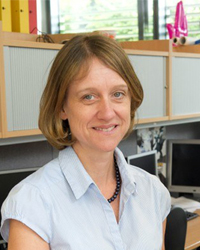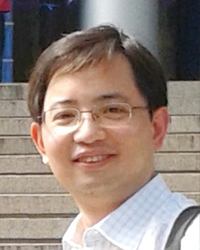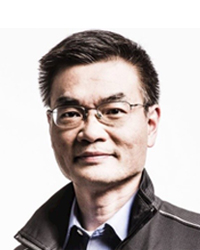Deep Metric Learning for Pattern Recognition
Jiwen Lu, Yueqi Duan, and Hao Liu
Monday, August 20, 2018, 14:00-17:00, 308, 3rd Floor
Tutorial Abstract
Over the past decade, deep metric learning has been developed as one of the basic techniques in machine learning and successfully applied to a wide range of pattern recognition tasks showing state-of-the-art performance. In this tutorial, we will overview the trend of deep metric learning techniques and discuss how they are employed to boost the performance of various pattern recognition tasks. First, we briefly introduce the basic concept of deep metric learning, and show the key advantages and disadvantages of existing deep metric learning methods in different pattern recognition tasks. Second, we introduce some of our newly proposed deep metric learning methods from several aspects, which are developed for different application-specific pattern recognition tasks, respectively. Lastly, we will discuss some open problems in deep metric learning to show how to further develop more advanced deep metric learning algorithms for pattern recognition in the future.
Tutorial Outline
Ø Introduction of the Tutorial (15 minutes)
Ø Methods (75 minutes)
· Discriminative Deep Metric Learning
· Deep Localized Metric Learning
· Deep Coupled Metric Learning
· Multi-Manifold Deep Metric Learning
· Deep Transfer Metric Learning
· Deep Adversarial Metric Learning
· Deep Hamming Metric Learning
Ø Applications (75 minutes)
· Face Recognition
· Person Re-identification
· Object Recognition
· Action Recognition
· Object Tracking
· Image Set Classification
· Image Retrieval
Ø Open Questions and Discussions (15 minutes)
Speaker Introduction

Jiwen Lu is currently an Associate Professor with the Department of Automation, Tsinghua University, China. His current research interests include computer vision, pattern recognition, and machine learning. He has authored/co-authored over 180 scientific papers in these areas, where 52 papers are published in the IEEE Transactions journals (including 8 PAMI and 12 T-IP papers) and 27 papers are published in top-tier computer vision conferences (ICCV/CVPR/ECCV/NIPS). He is an elected member of the Multimedia Signal Processing Technical Committee and the Information Forensics and Security Technical Committee of the IEEE Signal Processing Society, and an elected member of the Multimedia Systems and Applications Technical Committee of the IEEE Circuits and Systems Society, an Associate Editor for Pattern Recognition, Pattern Recognition Letters, Journal of Visual Communication and Image Representation, Neurocomputing, and IEEE Access, a Guest Editor for Computer Vision and Image Understanding, and Image and Vision Computing, and a reviewer for over 40 international journals such as IEEE T-PAMI/IP. He serves/has served as an Area Chair for ICME 2018, WACV 2018, ICIP 2017, VCIP 2016, ICB 2016, BTAS 2016, WACV 2016, ICME 2015 and ICB 2015, a Workshop Chair for WACV 2017 and ACCV 2016, a Special Session Chair for VCIP 2015, and a technical program committee member for over 40 international conferences such as CVPR/ICCV/ECCV/NIPS/AAAI. He was a recipient of the Best Student Paper Award from the Pattern Recognition and Machine Intelligence Association (PREMIA) of Singapore in 2012, the Top 10% Best Paper Award from 2014 IEEE International Workshop on Multimedia Signal Processing (MMSP), and the National 1000 Young Talents Plan Program in 2015, respectively. Two of his authored/co-authored conference papers were nominated as the Best Paper Award Candidate in ICME 2011 and ICME 2013. He co-organizes several workshops/competitions at some international conferences such as ICME 2017, ICME 2014, ACCV 2014, IJCB 2014, and FG 2015. He has given tutorials at some international conferences including CVPR 2017, ICIP 2017, ICME 2017, ECCV 2016, ACCV 2016, CVPR 2015, FG 2015, ACCV 2014, ICME 2014 and IJCB 2014. He is a Senior Member of the IEEE
 Yueqi Duan received the B.S. degree in the Department of Automation, Tsinghua University, China, in 2014. He is currently a Ph.D Candidate with the Department of Automation, Tsinghua University, China. His current research interests include deep learning, unsupervised learning, and binary representation learning. He has authored/co-authored 13 scientific papers in these areas, where 5 papers are published as the first author in top journals and conferences, including IEEE TPAMI, TIP, TCSVT, CVPR and ICME. He serves as a regular reviewer member for a number of journals and conferences, e.g. TCSVT, IEEE Access, Pattern Recognition, Neurocomputing and ICIP. He has obtained the National Scholarship of Tsinghua in 2017
Yueqi Duan received the B.S. degree in the Department of Automation, Tsinghua University, China, in 2014. He is currently a Ph.D Candidate with the Department of Automation, Tsinghua University, China. His current research interests include deep learning, unsupervised learning, and binary representation learning. He has authored/co-authored 13 scientific papers in these areas, where 5 papers are published as the first author in top journals and conferences, including IEEE TPAMI, TIP, TCSVT, CVPR and ICME. He serves as a regular reviewer member for a number of journals and conferences, e.g. TCSVT, IEEE Access, Pattern Recognition, Neurocomputing and ICIP. He has obtained the National Scholarship of Tsinghua in 2017
 Hao Liu received the B.S. degree in software engineering from Sichuan University, China, in 2011, and the Master Engineering degree in computer technology from the University of Chinese Academy of Sciences, China, in 2014. He is currently pursuing the Ph.D. degree with the Department of Automation, Tsinghua University. Hisresearch interests include face alignment, facial age estimation, and deep learning. He has published a number of leading journals including IEEE TPAMI, TIP, TCSVT, TIFS and PR. He serves as regular reviewer member for a number of leading journals e.g. IEEE TPAMI, Access and Neurocomputing and international conferences including WACV, ICME and ICIP. He was a recipient of the Tsinghua National Scholarship. He was invited to give the oral and poster presentations on the Doctoral Consortium in FG 2017
Hao Liu received the B.S. degree in software engineering from Sichuan University, China, in 2011, and the Master Engineering degree in computer technology from the University of Chinese Academy of Sciences, China, in 2014. He is currently pursuing the Ph.D. degree with the Department of Automation, Tsinghua University. Hisresearch interests include face alignment, facial age estimation, and deep learning. He has published a number of leading journals including IEEE TPAMI, TIP, TCSVT, TIFS and PR. He serves as regular reviewer member for a number of leading journals e.g. IEEE TPAMI, Access and Neurocomputing and international conferences including WACV, ICME and ICIP. He was a recipient of the Tsinghua National Scholarship. He was invited to give the oral and poster presentations on the Doctoral Consortium in FG 2017





